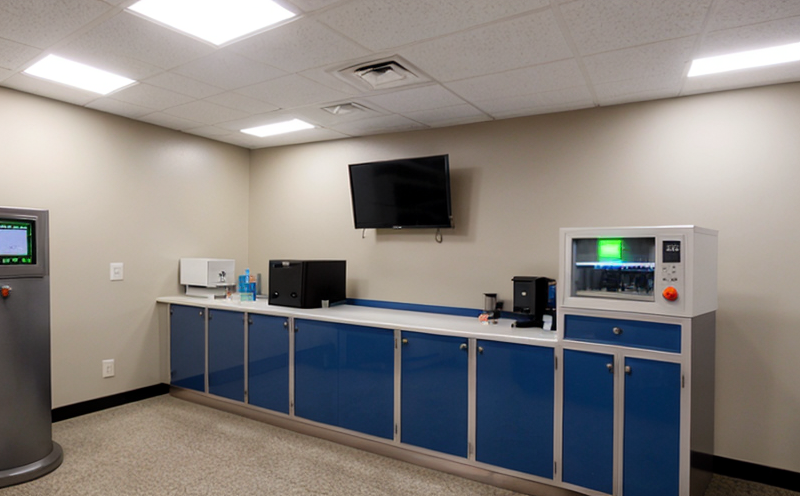ISO 29661 Radionuclide Purity Testing of Medical Isotopes
The ISO 29661 standard provides a comprehensive framework for determining the radionuclide purity of medical isotopes, which are crucial in nuclear medicine and radiopharmaceutical applications. This service ensures that the integrity and safety of medical isotopes used in diagnostic imaging and therapeutic procedures meet stringent international standards.
The radionuclides employed in medical isotope testing are often short-lived, meaning their half-lives are measured in hours to days rather than years or decades. The purity of these isotopes directly affects the efficacy and safety of the radiopharmaceuticals used in patient care. ISO 29661 ensures that only the desired radionuclide is present within acceptable limits, thus preventing contamination with unwanted isotopes.
The testing process involves several steps: sample preparation, instrumental analysis using high-purity germanium (HPGe) detectors, and data interpretation according to international standards. The HPGe detector detects gamma rays emitted by the radionuclides, allowing for precise quantification of each isotope's presence in the sample.
The testing laboratory adheres strictly to ISO 29661 guidelines, which include detailed procedures for sample handling and preparation, calibration of instrumentation, and data analysis. The use of advanced HPGe detectors ensures high sensitivity and accuracy, enabling the detection of even trace amounts of unwanted radionuclides.
Compliance with ISO 29661 is essential in ensuring that medical isotopes meet regulatory requirements for safety and efficacy. This standard helps to prevent patient exposure to unnecessary radiation from contaminants or impurities and ensures consistent quality across batches of medical isotopes.
The process begins by obtaining the sample, which may be a vial containing the radiopharmaceutical solution or a solid form of the isotope. The sample is then prepared according to specified procedures in the ISO 29661 document. Once prepared, the sample is analyzed using HPGe detectors capable of detecting gamma rays from various radionuclides.
Data analysis involves comparing the detected spectra with reference spectra derived from known standards. Any deviations from expected values are investigated further to ensure that only the intended radionuclide is present in the specified purity range.
The testing service provides detailed reports summarizing the results of each analysis, including any detected impurities or contaminants. These reports are essential for quality assurance and compliance with regulatory requirements such as those set by the International Atomic Energy Agency (IAEA) and the European Medicines Agency (EMA).
By adhering to ISO 29661, this service ensures that medical isotopes used in radiopharmaceuticals meet the highest standards of purity and safety. This is critical for maintaining patient trust and ensuring the effectiveness of diagnostic and therapeutic procedures.
The process outlined in ISO 29661 is designed to be robust and adaptable, allowing for continuous improvement through the integration of new technologies and methodologies. The service provider stays abreast of advancements in nuclear science and technology, ensuring that the testing methods remain state-of-the-art.
In conclusion, ISO 29661 radionuclide purity testing is an essential component of quality assurance in medical isotopes. It ensures that these vital substances meet stringent international standards for safety and efficacy, thereby protecting patients from potential risks associated with impure or contaminated radiopharmaceuticals.
Benefits
- Enhanced Quality Assurance: Ensures that medical isotopes meet the highest standards of purity and safety, enhancing patient care.
- Regulatory Compliance: Adherence to international standards such as ISO 29661 ensures compliance with regulatory requirements.
- Patient Safety: Prevents exposure to unnecessary radiation from contaminants or impurities in medical isotopes.
- Consistent Quality: Ensures consistent quality across batches of medical isotopes, supporting reliable diagnostic and therapeutic procedures.
Industry Applications
The ISO 29661 standard finds extensive application in the nuclear medicine and radiopharmaceutical sectors. It is particularly important for facilities involved in the production, processing, and distribution of medical isotopes used in diagnostic imaging and therapeutic procedures.
Nuclear medicine departments rely on high-purity radionuclides to perform accurate diagnoses and treat various conditions. By adhering to ISO 29661 guidelines, these departments can ensure that their radiopharmaceuticals meet stringent purity requirements, thereby enhancing the reliability of diagnostic results and therapeutic outcomes.
Similarly, manufacturers of medical isotopes benefit from this service by ensuring the quality and safety of their products. Compliance with ISO 29661 standards helps to maintain a consistent supply chain and ensures that the isotopes used in radiopharmaceuticals are safe for patient use.
The standard is also applicable to research institutions involved in the development of new medical isotopes and radiopharmaceuticals. By adhering to ISO 29661, these institutions can ensure that their products meet international standards, thereby facilitating global collaboration and regulatory approval.
International Acceptance and Recognition
The ISO 29661 standard for radionuclide purity testing of medical isotopes is widely recognized and accepted across the nuclear medicine and radiopharmaceutical industries. Its acceptance by regulatory bodies such as the International Atomic Energy Agency (IAEA) and the European Medicines Agency (EMA) underscores its importance in ensuring the quality and safety of medical isotopes.
Regulatory compliance with ISO 29661 is a key requirement for facilities involved in the production, processing, and distribution of medical isotopes. This ensures that these facilities meet international standards for purity and safety, thereby enhancing patient care and trust.
The standard's widespread adoption also facilitates global collaboration between nuclear medicine departments, manufacturers, and research institutions. By adhering to ISO 29661 guidelines, these entities can ensure that their products meet international standards, supporting the development of new medical isotopes and radiopharmaceuticals.
Facilities that comply with ISO 29661 are also more likely to receive regulatory approval from various national and international agencies. This enhances their reputation and credibility in the global market, making them preferred partners for collaboration and supply chain integration.





